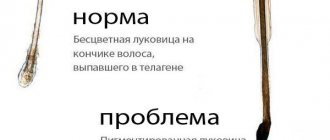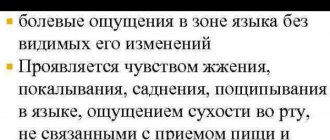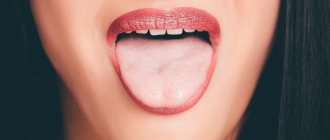Why does it hurt and how painful can it be?
Discomfort during the procedure depends on your pain threshold and the location of the puncture . Some salons offer anesthesia to reduce pain to zero, but we do not recommend doing it unless necessary , because the anesthesia injection is quite painful and is comparable to the puncture itself.
To make the puncture less painful, craftsmen use special laser-sharpened hollow needles. They allow the procedure to be carried out as painlessly as possible.
Professional piercers never use guns for piercing, because they push tissue under high pressure, which results in a lacerated wound. Also, pistols cannot be sterilized in a static machine due to the presence of plastic parts in it.
Does it hurt to get your nose pierced?
This is one of the popular types of piercings among both the male and female half of the population. There are different ways to pierce and wear jewelry:
- in the wing of the nose (standard method) - when the earring is inserted into a hole in the area of the so-called. helix, in the right or left nostril;
- nasal septum - the cartilage itself (septum), as well as the tissue located under the nasal septum under the tip of the nose (septril);
- tip of the nose – horizontal or vertical soft tissue piercing;
- bridge of the nose - perforation of a fold of skin in the area of the bridge of the nose (the tissues of the nose are actually not affected).
It is believed that the area of the so-called The nasolabial triangle is the most sensitive area on the face. Indeed, for many people, even a slight impact on the mucous membrane and skin of the nose and upper lip causes reflex lacrimation and intense pain. For other people, the piercing procedure is almost painless. It is impossible to say exactly what a particular person will feel: it all depends on the individual pain threshold, as well as the skill of the piercer.
If you read forums where users share their feelings after visiting a salon and having a piercing procedure, you can see that most people, when answering the question “how painful is it to pierce your nose,” answer negatively. Some say that it is no more painful than having your ears pierced; others even decided to pierce their nose with a gun or a needle themselves.
Where is the best place for a beginner to get their first puncture?
Minimal discomfort comes from piercing the eyebrows and lobe , which heal without any problems. It is a little more painful to pierce Helix and Conch, but they look more interesting. If you are very afraid and worried, you can always consult with a master and ask him all your questions. Perhaps the master will suggest you start with the simplest puncture so that you understand the healing process, and then move on to a more complex puncture.
We pierce the ears of adults and children, what is important to know
At what age can a child's ears be pierced? Naturally, there is no clear universal age for ear piercing. First of all, you need to honestly answer the following questions:
- Why do you want to pierce your child's ears?
- What are you most afraid of? Causes:
- Perhaps you remember how scared you were and want to pierce your child’s ears as soon as possible
- I'm tired of how many people often ask whether you have a girl or a boy
- Everyone you know to your kids has already had their ears pierced, and you don’t want your child to fall behind in anything.
- the child asks very much himself
The most common fears:
- hurting a child
- negative consequences of a puncture
- making decisions for the child that he will not approve of at a conscious age
If you are driven by the first three reasons, you must realize that you are doing this primarily for yourself. Think about it: if you were a child, you would approve of the same behavior of your parents. If you are sure that your baby will only thank you in the future for the ears pierced in early childhood, ear piercing will not cause harm if done responsibly. But if there are still doubts, it is better to postpone the procedure. You can get your ears pierced at any age if you wish. The simplest case is when you are interested in ear piercing at the request of a child. All you need to do is study the issue from a medical point of view. Fortunately, there are few restrictions here either. Almost all representatives of medicine will recommend your age from 3 to 11-12 years. And if a child has made a decision on his own and asks to have his ears pierced, most likely he falls into this age range. The age of three years and older is explained by the following: A younger child is more susceptible to inflammatory processes, which is possible during the piercing procedure. Many medications have an age limit of up to 2-3 years, so it may be difficult to get medical help in case of complications. It is difficult to explain to a small child that the ears should not be touched during the healing period, the child grabs everything, can bring in dirt, get caught in the earring or try to remove it Treatment of the ears after piercing can bring discomfort to the child, and a little restless stubborn person may rebel against the unpleasant procedure. Children's ears undergo changes, the final formation of cartilage and the auricle occurs, according to various estimates, by the 4-6th year. After three years, the child can already talk about his feelings and desires As for concerns about pain, psychologists say that a child under 1.5-2 years of age most likely will not understand what happened to him and will not feel fear or pain. In contrast to older age, when children often want, but are afraid to get their ears pierced. However, it should be noted that in the first case, you will get rid of the problem of fear, but you risk showing selfish tendencies and imposing your desires on the child, and you will also have to approach the choice of a specialist and caring for the puncture as responsibly as possible due to the vulnerability of a very small person. In the second case, the child’s choice will be conscious, but he will have to face a feeling of fear and anticipation of pain. In adolescence (after 12 years), you will still have to go through a complex and longer healing process. In fairness, I would like to note that modern piercing techniques are much less painful than those with which our parents pierced their ears, but this did not stop those who really wanted to see beautiful stones in their ears.
How to prepare for your child's ear piercing?
The first stage has been completed: the decision to pierce the ears has been made. Your next steps: study contraindications, consult a doctor if necessary
- choose a piercing method
- decide on the location of the procedure
- wait for the right time
- if the child is not an infant and is already able to understand, you should first, without intimidation, tell him what awaits him so that he is psychologically ready
Painkillers for piercings
A frequent client request is to take pain relief before piercing in order to completely avoid pain during the piercing, but good salons will refuse you for several reasons:
External anesthesia does not have the desired effect and only affects the skin, without working on the cartilage; it will relieve you of pain only at the beginning of the puncture, so there will still be pain.
If you give a painkiller injection, it will most likely be more painful than the puncture itself (this is especially true for cartilage).
The master may advise you to take a pain reliever for several days after piercing, for example, Nimesil (in powder form), it relieves pain and swelling well after the procedure.
How long does it hurt after a puncture?
Ideally, the puncture should bother you for several days, not counting a couple of weeks after washing with miramistin, which we recommend using.
The total healing time is 3-5 weeks, of which two weeks are treated with an antiseptic and special trepidation over the puncture.
Unpleasant sensations may occur later, but this is usually due to reasons such as:
- Large jewelry or irregularly shaped earring that puts pressure on the walls of the wound
- Swelling of the puncture area
- Frequent use of provocative facial grimaces, which cause muscles in the wound area to contract
- Severe inflammation at the puncture site
Historical reference
Piercing in English means puncture and has two basic meanings:
- piercing various parts of the body (nose, lips, cheeks, navel, etc.) for the purpose of subsequently inserting one or more jewelry;
- the decoration itself in the form of a ring, stud, etc.
This kind of product has been known and popular since ancient times in different parts of the world (India, the Mughal Empire, the Bedouins, the Aztecs, the Mayans, etc.).
In the 20th century, the popularity of piercing among Europeans and Americans increased. By decorating themselves in this way, representatives of punk culture and other newfangled movements of that time tried to highlight and indicate their belonging to one or another cultural movement.
The 21st century has made some adjustments to newfangled trends and the age limit of piercing owners (the vast majority are young people under the age of 14-25). Nevertheless, it also remains popular and in demand.
What does a girl's nose piercing mean?
Among Indian women, a ring or earring on a girl’s nose was associated with the cult of the goddess Lakshmi. It symbolizes well-being, luck, vitality and prosperity. According to Ayurveda (Indian alternative medicine), the nostrils are associated with the reproductive organs of a woman. Therefore, the meaning of a ring in a girl’s nose implies the woman’s health and ability to conceive a child and procreate, which is her main purpose.
Punctures are made both at certain points on the wings of the nose and in the nasal septum. Often the piercing is performed the night before the wedding, and a girl with a side nose piercing comes out to the groom and guests, showing her readiness for marriage and childbearing. Following tradition, a similar piercing was performed on the left side of the nose, sometimes connected with a chain to the earlobe.
Gold piercing with cubic zirconia (go to the SUNLIGHT catalogue)
In a number of Indian states, piercing of the nasal septum (septum) indicates that its owner is a married woman. Others see it as protection and safety. Among the Australian tribes, it was believed that piercing the nose smoothes it, makes it more graceful and beautiful.
Earrings, rings, and less often chains are used as jewelry. A small nose stud piercing (encrusted with a precious stone or made of noble metal) looks miniature and elegant, giving the face a pretty look with elements of coquetry.
Nowadays, girls use piercings in this area exclusively as decoration and to attract attention. Most often this is one or two small decorations. Asymmetrical (one-sided) punctures are also possible.
How to reduce pain
After the piercing is performed, it is important to organize proper wound care. Treatment is carried out throughout the entire healing period, about a month. The puncture heals on average after 40-45 days, provided proper care is taken; most often, with regular washing, this period is reduced by half.
If your eyebrow hurts after 2-3 days, you should pay attention to the amount of fluid you consume, this will minimize swelling and relieve pain. It is not recommended to drink alcohol, which causes fluid retention in the body.
To reduce pain, stop touching the jewelry and reduce facial activity.
It is unacceptable to use painkillers, gels or ointments.
Preparing for a puncture and contraindications
A puncture is indicated only in severe cases of ear disease, when conservative therapy has not been successful. Protracted otitis media is considered if symptoms return within several months to a year after a full course or two of antibiotic treatment.
The otolaryngologist prescribes this study after a thorough examination of the medical history and taking into account all risks. The doctor determines:
- condition of the eardrum;
- sensitivity of the membrane to sound vibrations;
- if there is a suspicion of complications, send for tomography;
- clarifies the presence (absence) of individual drug intolerance.
The puncture is carried out when the main inflammatory process has already been stopped. They refuse to carry out the manipulation if there are scars on the eardrum or you have recently had ear surgery. The intervention is also not performed on children under six months old.










